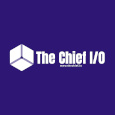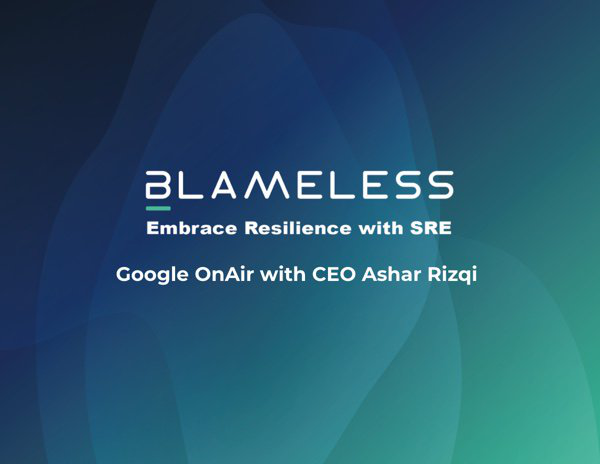July Best DevOps and Cloud Native Stories
in DevOps , Kubernetes , Containerization , Cloud Computing

These are the most visited and read stories from last month.
Since this website was released, we were engaged in publishing insightful stories and blog posts from the DevOps and Cloud Native world. Thanks also to our contributors Blameless, MetricFire, CloudPlex, TotalCloud, and Debricked, who were the first contributors in this project.
If you would like to get published on The Chief I/O, let's get in touch here.
Let's move to the list of the most read stories from last month.
CI/CD Pipelines for Kubernetes Applications
"In the first post of a three-part series, get started on understanding CI/CD pipelines for Kubernetes applications. Also take a look at the tools and resources you can use to build CI/CD pipelines."
Top 10 Desktop as a Service Providers
As the coronavirus or COVID continues to spread around the world, and the World Health Organization calls the outbreak of COVID-19 a pandemic, companies need to assess their work as usual during this time.
As a result of the recent challenges, many companies are demanding more remote access solutions. With these solutions, employers want to ensure that their employees can continue to run their daily business from home. A popular solution is Desktop as a Service (DaaS).
Grafana vs. Power BI
Compare Grafana and Power BI on market position, pricing, and core strengths.
How to take a 7 figure monitoring budget down to 6
Monitoring is an essential tool but your time and budget are limited. MetricFire hosts your monitoring so you can spend more time on creating your product and less time on monitoring it.
Read the full story here.
Fostering Psychological Safety in Remote Teams is Crucial
With the rise of remote work, fostering psychological safety within teams is crucial. In this blog we discuss what psychological safety looks like, the benefits of making it part of your organization's culture, and ways to prioritize it.
Google Cloud OnAir with CEO Ashar Rizqi: Benefits of Cloud Infrastructure
Leaning in to a cloud native strategy: Software is eating the world and industries are being disrupted. Underneath it all, modern applications have completely changed. It's creating complex interdependencies between these different modules, especially when you're running inside in a hybrid environment. So it really comes down to managing complexity.
Cloud versus building in house: The best thing that you can do for your company is to say no to certain things. It elevates your credibility, and it shows focus and commitment to a real problem.
Advice to other startups: The key is SaaS economics. You have to break SaaS economics down into its constituent parts and look at each one of those things very, very closely. No decision is likely to be the one that kills you. Not taking any kind of action is really the thing that's going to hurt the most.
Managing Burnout During COVID-19
During this crisis, we’re all trying our best to keep ourselves and others healthy, manage chaotic homes, and prioritize our mental health. However, this can be difficult even when we’re not experiencing a pandemic. With the added stress, burnout is occurring at an alarming rate with people unable to separate home from work, the increased burden of keeping everything on and heightened on-call loads, and the strain on communication.
Somedays, you might find it difficult to unplug and relax. Others, you may dread logging on. However, this doesn’t mean you’re not good at your job or capable of remote work. Instead, this is likely a version of burnout that none of us have experienced before. It’s difficult to overcome, but there are some ways to combat this and keep yourself and your team from burning out.
Read the full story here.
ECS Vs. EKS Vs. Fargate: The Good, the Bad, the Ugly
“Are you a Docker person or a Kubernetes person?”
“AWS ECS is for you if you like using Docker!”
“AWS EKS is for you if you love Kubernetes!”
“AWS Fargate is for you if you do not want the grunt work of managing either Docker or Kubernetes!”
While we have heard such statements from cloud engineers on several accounts, each of these services surprisingly look similar at the top level, but have their own characteristics and advantages.
To give you a quick walk through, here’s a table with few key curated facts.
Get similar stories in your inbox weekly, for free
Share this story:

The Chief I/O
The team behind this website. We help IT leaders, decision-makers and IT professionals understand topics like Distributed Computing, AIOps & Cloud Native
Latest stories
HIPAA and PCI DSS Hosting for SMBs: How to Choose the Right Provider
HIPAA protects patient data; PCI DSS protects payment data. Many small and mid-sized businesses now …
The Rise of GPUOps: Where Infrastructure Meets Thermodynamics
GPUs used to be a line item. Now they're the heartbeat of modern infrastructure.
Top Bare-Metal Hosting Providers in the USA
In a cloud-first world, certain workloads still require full control over hardware. High-performance computing, latency-sensitive …
Top 8 Cloud GPU Providers for AI and Machine Learning
As AI and machine learning workloads grow in complexity and scale, the need for powerful, …
How ManageEngine Applications Manager Can Help Overcome Challenges In Kubernetes Monitoring
We tested ManageEngine Applications Manager to monitor different Kubernetes clusters. This post shares our review …
AIOps with Site24x7: Maximizing Efficiency at an Affordable Cost
In this post we'll dive deep into integrating AIOps in your business suing Site24x7 to …
A Review of Zoho ManageEngine
Zoho Corp., formerly known as AdventNet Inc., has established itself as a major player in …
Should I learn Java in 2023? A Practical Guide
Java is one of the most widely used programming languages in the world. It has …
The fastest way to ramp up on DevOps
You probably have been thinking of moving to DevOps or learning DevOps as a beginner. …
Why You Need a Blockchain Node Provider
In this article, we briefly cover the concept of blockchain nodes provider and explain why …
Top 5 Virtual desktop Provides in 2022
Here are the top 5 virtual desktop providers who offer a range of benefits such …



















